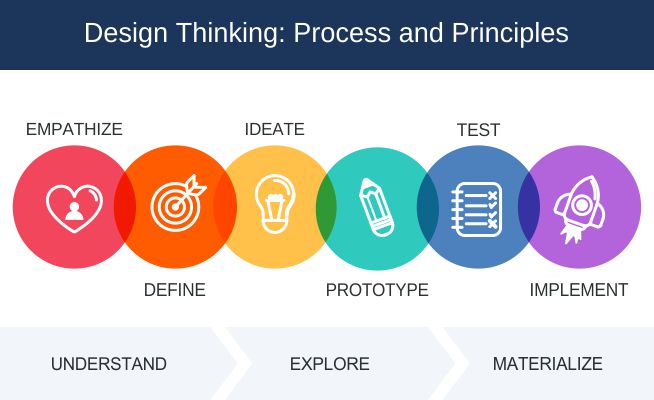Cultivating a Culture of Innovation: The Foundation of Entrepreneurial Success
Fostering a culture of innovation is crucial for entrepreneurial success. A culture that encourages creativity, experimentation, and calculated risk-taking can help drive business growth and stay ahead of the competition. Leadership plays a significant role in cultivating this culture, as they set the tone for the organization and inspire employees to think outside the box. Employee empowerment is also essential, as it allows individuals to take ownership of their ideas and projects, leading to increased motivation and engagement.
Continuous learning is another vital component of a culture of innovation. Providing opportunities for employees to develop new skills and stay up-to-date with industry trends can help stimulate creativity and innovation. This can be achieved through training programs, workshops, and conferences, as well as encouraging employees to attend industry events and share their experiences with the team.
Entrepreneurship and innovation strategies that prioritize a culture of innovation can lead to significant benefits, including increased employee satisfaction, improved productivity, and enhanced competitiveness. By embracing a culture of innovation, entrepreneurs can create an environment that encourages creativity, experimentation, and growth, ultimately driving business success.
Moreover, a culture of innovation can help entrepreneurs stay adaptable in a rapidly changing business landscape. By encouraging experimentation and learning from failure, entrepreneurs can develop a mindset that is open to new ideas and willing to pivot when necessary. This can help businesses stay ahead of the curve and respond to changing market conditions.
Ultimately, cultivating a culture of innovation is essential for entrepreneurial success. By prioritizing leadership, employee empowerment, and continuous learning, entrepreneurs can create an environment that encourages creativity, experimentation, and growth, driving business success and staying ahead of the competition.
Identifying Opportunities for Growth: How to Conduct a Market Analysis
Conducting a market analysis is a crucial step in identifying opportunities for growth and innovation in entrepreneurship. A thorough market analysis helps entrepreneurs understand their target audience, assess the competitive landscape, and identify market trends that can inform their business strategy. To conduct a market analysis, entrepreneurs should start by researching their target audience, including demographics, needs, and preferences.
This can be achieved through online surveys, focus groups, and customer interviews. Analyzing competitors is also essential, as it helps entrepreneurs understand the competitive landscape and identify gaps in the market that their business can fill. This can be done by researching competitors’ products, services, and marketing strategies, as well as analyzing their strengths and weaknesses.
Identifying market trends is also critical, as it helps entrepreneurs stay ahead of the curve and anticipate changes in the market. This can be achieved by monitoring industry reports, attending conferences and trade shows, and following industry leaders on social media. By combining these insights, entrepreneurs can develop a comprehensive market analysis that informs their business strategy and identifies opportunities for growth and innovation.
Entrepreneurship and innovation strategies that prioritize market analysis can lead to significant benefits, including increased competitiveness, improved product development, and enhanced customer satisfaction. By understanding their target audience, assessing the competitive landscape, and identifying market trends, entrepreneurs can develop a business strategy that is tailored to their market and positioned for success.
Moreover, a market analysis can help entrepreneurs identify potential partnerships and collaborations that can drive growth and innovation. By understanding the competitive landscape and identifying gaps in the market, entrepreneurs can identify potential partners and collaborators that can help them fill those gaps and drive business success.
Ultimately, conducting a market analysis is a critical step in identifying opportunities for growth and innovation in entrepreneurship. By researching their target audience, analyzing competitors, and identifying market trends, entrepreneurs can develop a comprehensive market analysis that informs their business strategy and drives business success.
Design Thinking for Entrepreneurs: A Step-by-Step Guide to Creative Problem-Solving
Design thinking is a powerful approach to creative problem-solving that can help entrepreneurs develop innovative solutions to complex business challenges. By applying design thinking principles, entrepreneurs can create products, services, and experiences that meet the needs of their customers and drive business success. The design thinking process typically involves five stages: empathize, define, ideate, prototype, and test.
The empathize stage involves gaining a deep understanding of the customer’s needs and pain points. This can be achieved through customer interviews, surveys, and observations. The define stage involves defining the problem or opportunity, and identifying the key challenges and constraints. The ideate stage involves generating a wide range of ideas and solutions, without worrying about their feasibility or practicality.
The prototype stage involves creating a tangible representation of the idea or solution, and testing it with customers or stakeholders. The test stage involves refining the prototype based on feedback and iterating until a viable solution is achieved. By applying design thinking principles, entrepreneurs can develop innovative solutions that meet the needs of their customers and drive business success.
Entrepreneurship and innovation strategies that prioritize design thinking can lead to significant benefits, including increased customer satisfaction, improved product development, and enhanced competitiveness. By applying design thinking principles, entrepreneurs can create products, services, and experiences that are tailored to the needs of their customers and drive business success.
Moreover, design thinking can help entrepreneurs stay adaptable in a rapidly changing business landscape. By applying design thinking principles, entrepreneurs can develop a mindset that is open to new ideas and willing to pivot when necessary. This can help businesses stay ahead of the curve and respond to changing market conditions.
Examples of successful design thinking implementation can be seen in companies such as Apple, Google, and Amazon. These companies have used design thinking to develop innovative products and services that have disrupted entire industries and created new markets. By applying design thinking principles, entrepreneurs can develop innovative solutions that drive business success and stay ahead of the competition.
Building a Strong Network: The Power of Partnerships and Collaborations
Building a strong network of partners, collaborators, and mentors is essential for entrepreneurial success. A strong network can provide access to valuable resources, expertise, and support, helping entrepreneurs to overcome challenges and achieve their goals. In the context of entrepreneurship and innovation strategies, a strong network can be a key differentiator between success and failure.
Partnerships and collaborations can take many forms, including strategic partnerships, joint ventures, and mentorship relationships. Strategic partnerships can provide access to new markets, technologies, and expertise, while joint ventures can help entrepreneurs to share risks and resources. Mentorship relationships can provide valuable guidance and support, helping entrepreneurs to navigate complex business challenges.
To build a strong network, entrepreneurs should focus on establishing relationships with people who share their values and goals. This can be achieved through networking events, conferences, and online platforms. Entrepreneurs should also be proactive in seeking out partnerships and collaborations, rather than waiting for opportunities to come to them.
A strong network can also help entrepreneurs to stay ahead of the curve in terms of innovation and industry trends. By partnering with other businesses and organizations, entrepreneurs can gain access to new technologies, expertise, and resources, helping them to stay competitive in a rapidly changing business landscape.
Examples of successful partnerships and collaborations can be seen in companies such as Airbnb, Uber, and Spotify. These companies have used partnerships and collaborations to drive growth and innovation, and to stay ahead of the competition. By building a strong network of partners, collaborators, and mentors, entrepreneurs can achieve similar success and drive business growth.
In addition, a strong network can also provide access to funding and investment opportunities. Many investors and venture capitalists look for entrepreneurs with a strong network and a proven track record of partnerships and collaborations. By building a strong network, entrepreneurs can increase their chances of securing funding and investment.
Embracing Failure as a Catalyst for Innovation: Lessons from Successful Entrepreneurs
Failure is an inevitable part of the entrepreneurial journey, but it can also be a catalyst for innovation and growth. Many successful entrepreneurs have leveraged failure as a learning experience, using it to refine their ideas, improve their products, and develop new strategies. In the context of entrepreneurship and innovation strategies, embracing failure can be a key differentiator between success and failure.
One of the most important lessons that entrepreneurs can learn from failure is the importance of experimentation and iteration. By testing new ideas and approaches, entrepreneurs can identify what works and what doesn’t, and use that information to refine their strategies. This process of experimentation and iteration is a key component of design thinking, a problem-solving approach that is widely used in entrepreneurship and innovation.
Another important lesson that entrepreneurs can learn from failure is the importance of resilience and adaptability. When faced with failure, entrepreneurs must be able to bounce back and adapt to new circumstances. This requires a high degree of emotional intelligence, as well as the ability to think on one’s feet and respond to changing circumstances.
Examples of successful entrepreneurs who have leveraged failure as a catalyst for innovation include Steve Jobs, who was fired from Apple before returning to lead the company to success, and Thomas Edison, who is famously quoted as saying “I have not failed. I’ve just found 10,000 ways that won’t work.” These entrepreneurs, and many others like them, have demonstrated the importance of embracing failure as a learning experience, and using it to drive innovation and growth.
In addition to these lessons, entrepreneurs can also learn from the failures of others. By studying the failures of other entrepreneurs and companies, entrepreneurs can gain valuable insights into what works and what doesn’t, and use that information to inform their own strategies. This process of learning from failure is a key component of entrepreneurship and innovation, and is essential for driving growth and success.
Ultimately, embracing failure as a catalyst for innovation requires a mindset shift. Entrepreneurs must be willing to take risks, experiment with new ideas, and learn from their mistakes. By doing so, they can develop the resilience and adaptability needed to succeed in today’s fast-paced business environment, and drive innovation and growth in their companies.
Measuring Innovation Success: Key Performance Indicators for Entrepreneurs
Measuring innovation success is crucial for entrepreneurs to evaluate the effectiveness of their innovation strategies and make informed decisions. Key performance indicators (KPIs) play a vital role in measuring innovation success, as they provide a framework for tracking progress and identifying areas for improvement. In the context of entrepreneurship and innovation strategies, KPIs can help entrepreneurs to stay focused on their goals and objectives, and make adjustments as needed.
There are several KPIs that entrepreneurs can use to measure innovation success, including revenue growth, customer acquisition, and product development cycle time. Revenue growth is a key indicator of innovation success, as it reflects the impact of new products or services on the bottom line. Customer acquisition is another important KPI, as it measures the ability of new products or services to attract and retain customers. Product development cycle time is also a critical KPI, as it measures the speed and efficiency of the innovation process.
In addition to these KPIs, entrepreneurs can also use data analytics to inform their innovation strategies. By analyzing data on customer behavior, market trends, and product performance, entrepreneurs can gain valuable insights into what works and what doesn’t, and make adjustments accordingly. This process of data-driven decision making is a key component of entrepreneurship and innovation, and is essential for driving growth and success.
Examples of companies that have successfully used KPIs to measure innovation success include Google, Amazon, and Facebook. These companies have used data analytics to inform their innovation strategies, and have achieved significant growth and success as a result. By using KPIs to measure innovation success, entrepreneurs can achieve similar results and drive growth and success in their own companies.
Ultimately, measuring innovation success requires a combination of KPIs and data analytics. By using these tools, entrepreneurs can gain a deeper understanding of their innovation strategies and make informed decisions about how to improve them. This process of continuous improvement is a key component of entrepreneurship and innovation, and is essential for driving growth and success in today’s fast-paced business environment.
In conclusion, measuring innovation success is a critical component of entrepreneurship and innovation strategies. By using KPIs and data analytics, entrepreneurs can gain valuable insights into what works and what doesn’t, and make adjustments accordingly. This process of continuous improvement is essential for driving growth and success, and is a key differentiator between successful and unsuccessful companies.
Staying Ahead of the Curve: Strategies for Continuous Learning and Improvement
Staying ahead of the curve in terms of innovation and industry trends is crucial for entrepreneurs to remain competitive and drive business success. Continuous learning and improvement are essential for entrepreneurs to stay up-to-date with the latest developments in their industry and to identify new opportunities for growth and innovation. In the context of entrepreneurship and innovation strategies, continuous learning and improvement are critical for driving business success and staying ahead of the competition.
One of the most effective ways for entrepreneurs to stay ahead of the curve is to engage in continuous learning and professional development. This can include attending conferences and workshops, reading industry publications, and participating in online forums and discussions. By staying informed about the latest trends and developments in their industry, entrepreneurs can identify new opportunities for growth and innovation and make informed decisions about how to drive business success.
Another important strategy for staying ahead of the curve is to stay adaptable and be willing to pivot when necessary. This requires entrepreneurs to be open-minded and willing to take calculated risks. By being adaptable and willing to pivot, entrepreneurs can respond quickly to changes in the market and stay ahead of the competition.
Examples of companies that have successfully used continuous learning and improvement to stay ahead of the curve include Google, Amazon, and Facebook. These companies have a strong culture of innovation and continuous learning, and are constantly looking for new ways to improve and stay ahead of the competition. By adopting a similar approach, entrepreneurs can drive business success and stay ahead of the curve in their industry.
In addition to continuous learning and improvement, entrepreneurs can also use data analytics to stay ahead of the curve. By analyzing data on customer behavior, market trends, and product performance, entrepreneurs can gain valuable insights into what works and what doesn’t, and make informed decisions about how to drive business success. This process of data-driven decision making is a key component of entrepreneurship and innovation, and is essential for driving growth and success.
Ultimately, staying ahead of the curve requires a combination of continuous learning, improvement, and adaptability. By adopting these strategies, entrepreneurs can drive business success and stay ahead of the competition in their industry.
From Idea to Launch: A Step-by-Step Guide to Bringing Your Innovation to Market
Bringing an innovation to market requires a strategic approach that involves several key steps. From prototyping to testing and launching, entrepreneurs must navigate a complex process to ensure the success of their innovation. In the context of entrepreneurship and innovation strategies, a well-planned launch can make all the difference between success and failure.
The first step in bringing an innovation to market is to create a prototype. This involves developing a working model of the product or service that can be tested and refined. Prototyping is an essential part of the innovation process, as it allows entrepreneurs to test their ideas and identify potential flaws before investing too much time and resources.
Once a prototype has been developed, the next step is to test it with a target audience. This involves gathering feedback and data on how the product or service performs in real-world scenarios. Testing is a critical part of the innovation process, as it allows entrepreneurs to refine their ideas and make improvements before launching.
After testing and refining the prototype, the next step is to launch the innovation to market. This involves developing a marketing strategy and executing a plan to reach the target audience. Launching an innovation requires careful planning and execution, as it can make or break the success of the product or service.
Examples of successful innovation launches include Apple’s iPhone and Amazon’s Echo. These companies used a strategic approach to launch their innovations, including prototyping, testing, and executing a well-planned marketing strategy. By following a similar approach, entrepreneurs can increase their chances of success and bring their innovations to market effectively.
In addition to these steps, entrepreneurs must also consider the importance of iteration and continuous improvement. This involves gathering feedback from customers and making improvements to the product or service over time. By iterating and improving, entrepreneurs can ensure that their innovation remains competitive and meets the evolving needs of their target audience.
Ultimately, bringing an innovation to market requires a combination of strategic planning, prototyping, testing, and launching. By following these steps and iterating and improving over time, entrepreneurs can increase their chances of success and bring their innovations to market effectively.






